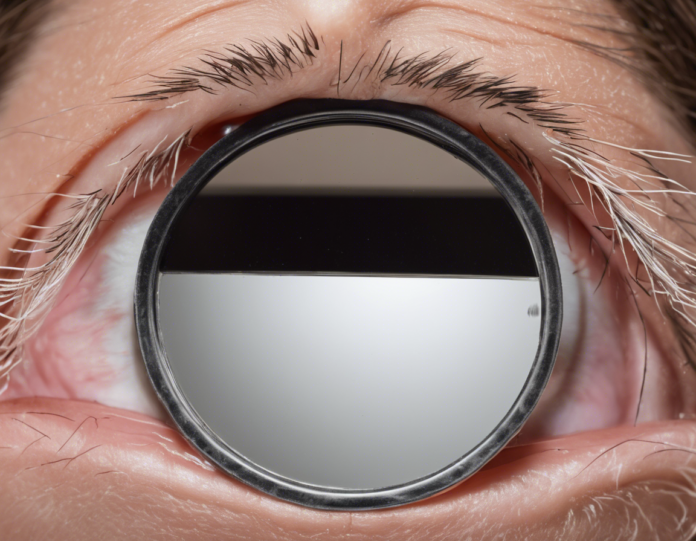A concave mirror is a type of spherical mirror in which the reflective surface bulges inward. When light rays strike a concave mirror, they may either converge or diverge depending on the position of the object relative to the mirror. In this article, we will delve into the concept of threefold magnification using a concave mirror. Understanding how to calculate magnification and the various factors that influence it can provide valuable insights into the behavior of concave mirrors.
Understanding Concave Mirrors
Concave mirrors are widely used in various optical devices such as telescopes, satellite dishes, and shaving mirrors. The reflective surface of a concave mirror is curved inward, causing incoming parallel rays of light to converge at a specific point known as the focal point. This focal point is located along the principal axis of the mirror, which is an imaginary line passing through the center of curvature, the focal point, and the vertex of the mirror.
Magnification in Concave Mirrors
Magnification in optics refers to the process of enlarging or reducing the size of an object. In the case of concave mirrors, magnification is influenced by the mirror's focal length, object distance, and image distance. Magnification (m) is defined as the ratio of the height of the image (h') to the height of the object (h). It can be calculated using the formula:
[
m = \frac{-h'}{h}
]
The negative sign indicates that the image is inverted with respect to the object in concave mirrors. Magnification can also be expressed in terms of object distance (u) and image distance (v) using the formula:
[
m = \frac{v}{u}
]
Threefold Magnification with a Concave Mirror
Achieving a threefold magnification with a concave mirror involves creating an image that is three times larger than the actual object. To calculate the necessary parameters for this magnification, consider the following steps:
-
Determine the object distance (u): Place the object at a specific distance from the concave mirror. The object distance is denoted by 'u' in the magnification formula.
-
Calculate the focal length (f): The focal length of the concave mirror plays a crucial role in determining the image distance and magnification. It is half of the radius of curvature of the mirror.
-
Using the mirror formula: The mirror formula for concave mirrors is given by:
[
\frac{1}{f} = \frac{1}{v} + \frac{1}{u}
]
-
Calculate the image distance (v): Substitute the known values of focal length and object distance into the mirror formula to determine the image distance.
-
Determine the magnification (m): Once the image distance is calculated, use the magnification formula to find the magnification factor.
Factors Affecting Magnification with Concave Mirrors
Several factors can influence the magnification achieved with a concave mirror:
-
Object distance: Moving the object closer to the mirror can result in increased magnification.
-
Focal length: Mirrors with shorter focal lengths tend to produce higher magnification.
-
Curvature of the mirror: A more curved concave mirror can lead to greater magnification.
-
Size of the object: Larger objects may appear more magnified in the mirror.
Applications of Threefold Magnification
The ability to achieve threefold magnification with a concave mirror has various practical applications in different fields:
-
Dentistry: Dentists use concave mirrors for examining hard-to-reach areas inside the mouth with enhanced magnification.
-
Security and Surveillance: Threefold magnification can be beneficial for security cameras to capture detailed images over a larger area.
-
Art and Jewelry: Artists and jewelers may utilize concave mirrors for magnifying intricate details in paintings or jewelry designs.
-
Scientific Research: In laboratories, concave mirrors with threefold magnification can aid in observing tiny specimens or conducting precise experiments.
Frequently Asked Questions (FAQs)
- Can a concave mirror produce a threefold enlarged real image?
-
Yes, a concave mirror can produce a threefold enlarged real image under certain conditions of object distance and focal length.
-
How does the shape of the concave mirror affect magnification?
-
A more curved (deeper) concave mirror tends to provide higher magnification compared to a less curved mirror.
-
What happens to magnification if the object is placed beyond the focal point of a concave mirror?
-
When the object is placed beyond the focal point of a concave mirror, the image appears enlarged and virtual, resulting in a reduced magnification.
-
Is magnification always positive for concave mirrors?
-
No, magnification in concave mirrors is negative when the image is real and inverted, indicating a reduction in size compared to the object.
-
Can a concave mirror with a short focal length achieve a threefold magnification with ease?
- Concave mirrors with shorter focal lengths have the potential to achieve threefold magnification more easily compared to mirrors with longer focal lengths.
In conclusion, understanding the principles of magnification in concave mirrors and the methods to achieve threefold magnification can provide valuable insights into the behavior of light rays. By mastering the calculations and factors influencing magnification, individuals can harness the power of concave mirrors for a wide array of applications spanning from science to everyday life.

